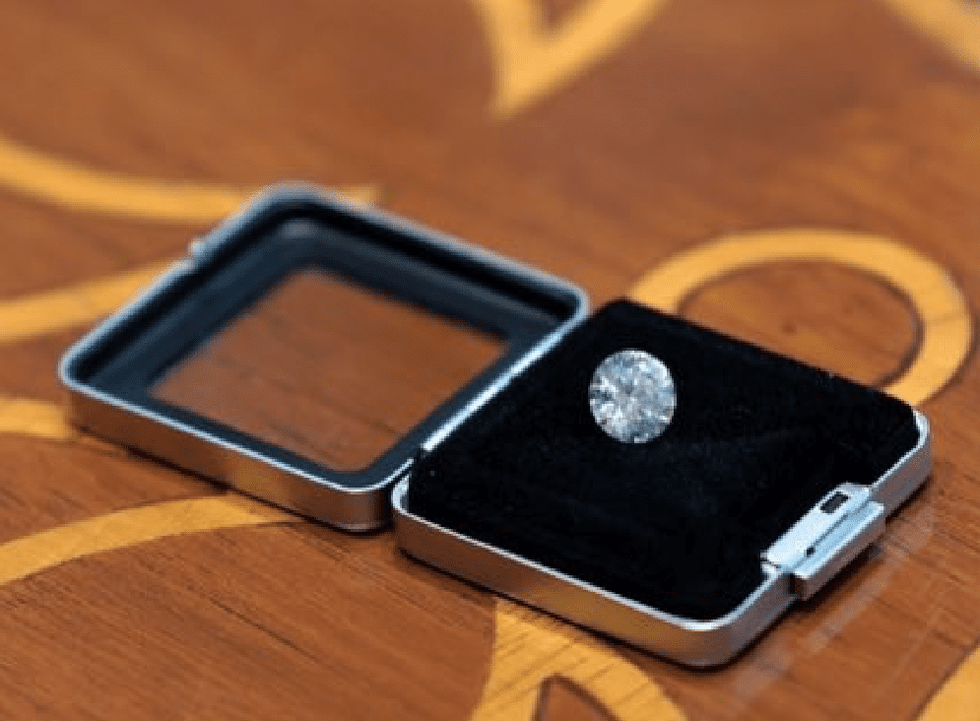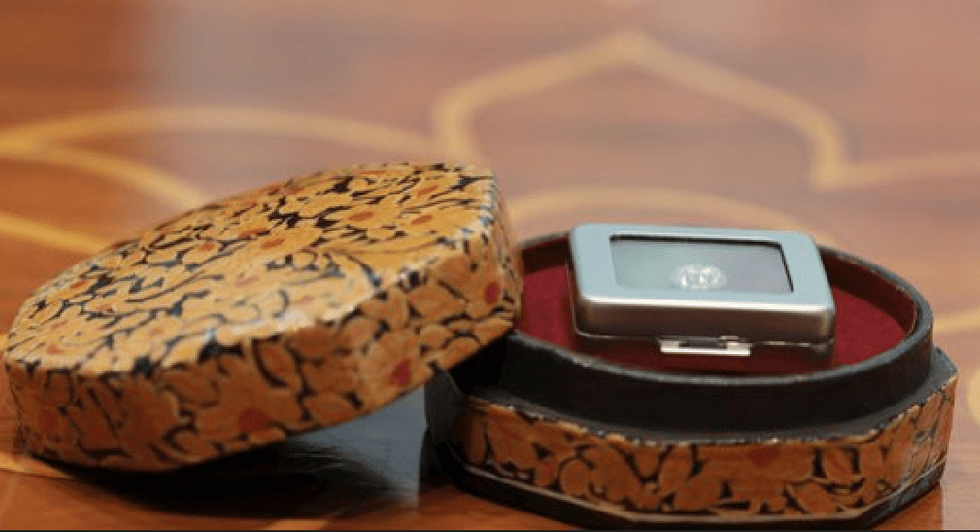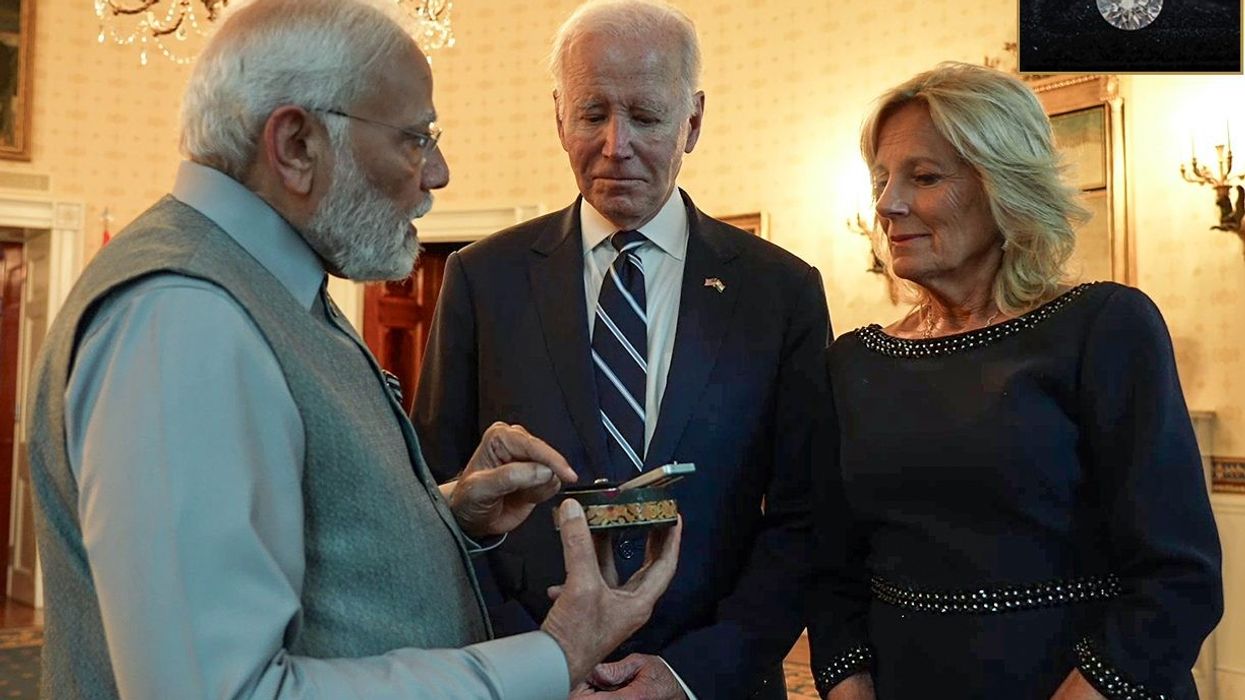DIAMONDS are a girl’s best friend, it is said, and prime minister Narendra Modi swerved clear of any controversy by gifting an eco-friendly lab-grown 7.5 carat diamond to US first lady Jill Biden.
President Joe Biden and his wife hosted Modi for an intimate dinner at the White House on Wednesday (21), when they discussed a range of issues, exchanged gifts and enjoyed a musical tribute to the regions of India.
"Bharat Ka Heera! (India's diamond) PM@NarendraModi ji gifts this beautiful eco-friendly lab-grown diamond, placed in Kashmir's exquisite Papier mâché box to the U.S First Lady @FLOTUS," India’s commerce and industry minister, Piyush Goyal, said in a tweet.

The eco-friendly “green” diamond emits only 0.028 grams of carbon per carat and is certified by the Gemological Lab, IGI (International Gemological Institute).
India, which is known for its leading role in cutting and polishing naturally occurring diamonds, is promoting the manufacturing of lab-grown diamond (LGD), with measures to incentivise their production.
The country is known for its expertise in cutting and polishing the precious stone.
Some 90 per cent of the world's diamonds are cut and polished in the bustling port of Surat in Modi’s home state of Gujarat.
However, the diamond hub has recently suffered from supply cuts and falling demand following G7 sanctions on Russia’s diamond trade.
In total around a million people, including dealers and suppliers, are involved in the industry in Gujarat.

Russian mining giants such as Alrosa traditionally accounted for over a third of India's rough diamonds.
But supplies have shrunk in the months since Western sanctions cut Russia off from the SWIFT international payments network in March last year over its invasion of Ukraine.
At the same time, Indian exports of cut and polished diamonds have slumped with US and European firms refusing to buy diamonds sourced from Russia.
Besides the jewellery industry, lab-grown diamonds are also used in computer chips, satellites, and 5G networks as they can withstand extreme environments due to their potential to operate at higher speeds while using less power than silicon-based chips.












